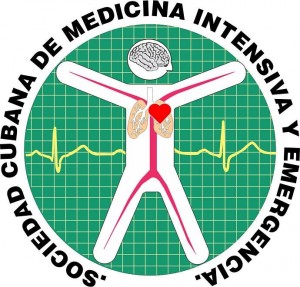Biomarcadores en la sepsis y su valor predictivo
Palabras clave:
sepsis, shock séptico, biomarcador.Resumen
Introducción: La sepsis es una enfermedad causante de una alta mortalidad y es reconocida mundialmente. La incorporación de nuevos biomarcadores posibilita la obtención de un diagnóstico rápido y preciso.
Objetivo: Determinar la capacidad predictiva en un grupo de biomarcadores en pacientes con sepsis.
Métodos: Se realizó un estudio de casos y controles con 70 pacientes ingresados en la Unidad de Cuidados Intensivos de Adultos del Hospital Militar Central Dr. Luis Díaz, entre enero de 2015 y enero de 2017. La muestra quedó dividida en 51 pacientes (grupo de casos) y 19 (grupo control). Se emplearon variables demográficas, la estadía y la mortalidad; y se determinaron los biomarcadores más sensibles para el diagnóstico inicial y de mejor valor predictivo. Se empleó la estadística descriptiva y se realizaron pruebas diagnósticas con más de dos resultados (Curva ROC).
Resultados: El grupo de edades más representativo fue el de 66-76 años, con un ligero predominio de varones. Se reportó incremento de la mortalidad en estadios más avanzados de la sepsis. El lactato fue el marcador con mayor sensibilidad.
Conclusiones: De los biomarcadores clásicos, el lactato, la proteína C reactiva, el hematocrito y tiempo de protrombina fueron los de mayor sensibilidad. A pesar de que tienen una baja especificidad, son útiles para el manejo del paciente séptico, pues poseen valores más elevados cuanto mayor es el estadio de la sepsis o el riesgo de fallecer.
Descargas
Citas
1. Permpikul C, Srimgam P, Tongyoo S. Tongyoo S. Therapeutic goal achievements during severe sepsis and septic shock resuscitation and their association with patient’s outcomes. J Med Assoc Thai. 2014;97(Suppl 3):S176-83.
2. Matics TJ, Sanchez-Pinto LN. Adaptation and Validation of a Pediatric Sequential Organ Failure Assessment Score and Evaluation of the Sepsis-3 Definitions in Criticallyill Children. JAMA Pediatr. 2017 Oct 2;171(10):e172352.
3. Donoso A, Arriagada D, Cruces P, Díaz F. Shock séptico en pediatría I. Enfoque actual en el diagnóstico y tratamiento. Rev Chil Pediatric. 2013;84(5):484-98.
4. Gual C. Aforismos. En “Tratados Hippocrattcos”. Madrid: Editorial Gredos; 1983. p. 243.
5. Langmuir AD, Worthen TD, Solomon J, Ray CG, Petersen E. The Thucydides syndrome. A new hypothesis for the cause of the plague of Athens. N Engl J Med. 1985 Oct 17;313(16):1027-30.
6. Rhodes A, Evans LE, Alhazzani W, Levy MM, Antonelli M, Ferrer R, et al. Surviving Sepsis Campaign: International Guidelines for Management of Sepsis and Septic Shock 2016. Crit Care Med. 2017 Mar;45(3):486-552.
7. Bone RC. Sepsis, the sepsis syndrome, multi-organ failure: aplea for comparable definitions. Ann intern Med. 1991;114(4):332-3.
8. Van de Voorde P, Emerson B, Gómez B, Willems J, Yildizdas D, Iglowstein I, et al. Paediatric community-acquired septic shock: results from REPEM network study. Eur J Pediatr. 2013;172:667-74.
9. Dellinger R, Levy M, Rhodes A, Annane D, Gerlach H, Opal S, et al. Surviving Sepsis Campaign: International Guidelines for Management of Severe Sepsis and Septic Shock, 2012. Intensive Care Med. 2013;39(2):165228.
10. Seymour CW, Liu VX, Iwashyna TJ, Brunkhorst FM, Rea TD, Scherag A, et al. Assessment of clinical critica for sepsis: for the Third International Consensus Definitions for Sespsis and Septic Shock (Sepsis 3). JAMA. 2016;315(8):775-87.
11. Singer M, Deutschman CS, Seymour CW, Hari MS, Annane D, Bauer M, et al. The Third International Consensus Definition for Sepsis and Septic Shock. JAMA. 2016 Feb 23;315(8):801-10.
12. Shankar-Hari M, Phillips GS, Levy ML, Seymour CW, Liu VX, Deutschman CS. Developing a new definition and assessing new clinical criteria for sepsis shock: for the Third international Consensus Definitions for Sepsis and Septic Shock (Sepsis -3). JAMA. 2016;315(8):775-87.
13. Gomez B, Hernandez-Bou S, Garcia-Garcia JJ, Mintegi S; Bacteraemia Study Working Group from the Infectious Diseases Working Group, Spanish Society of Pediatric Emergencies (SEUP). Bacteremia in previously healthy children in emergency departments: clinical and microbiological characteristics and outcome. Eur J Clin Microbiol Infect Dis. 2015 Mar;34(3):453-60.
14. Permpikul C, Srimgam P, Tongyoo S. Therapeutic goal achievements during severe sepsis and septic shock resuscitation and their association with patient’s outcomes. J Med Assoc Thai. 2014;97(Suppl 3):S176-83.
15. Weiss SL, Fitzgerald JC, Balamuth F, Alpern ER, Lavelle J, Chilutti M, et al. Delayed antimicrobial therapy increases mortality and organ dysfunction duration in pediatric sepsis. Crit Care Med. 2014;42(11):2409-17.
16. Davis AL, Carcillo JA, Aneja RK, Deymann AJ, Lin JC, Nguyen TC, et al. American College of Critical Care Medicine Clinical Practice Parameters for Hemodynamic Support of Pediatric and Neonatal Septic Shock. Crit Care Med. 2017 Jun;45(6):1061-93.
17. Walley KR. Biomarkers in sepsis. Curr Infect Dis Rep. 2013;15:413-20.
18. Martin Loeches I, Levy MM, Artigas A. Management of severe sepsis: advances, challenges and current status. Drug des Devel Ther. 2015;9:2079-88.
19. Ortiz G, Dueñas C, Rodríguez F, Barreras L, de la Rosa G, Dennis R, et al. Epidemiology of sepsis in Colombia intensive care units. Biomédica. 2014;34(1):40-7.
20. Pérez MA, Calderón B, Comas B, Tarradas J, Borges M. Análisis de concordancia del tratamiento antibiótico de pacientes con sepsis grave en urgencias. Rev Esp Quimioter. 2015;28(6):295-301.
21. Pertuz Y, González G. Uso de los biomarcadores de inflamación en el diagnóstico de sepsis, en unidades de cuidados intensivos de Santa Martha Colombia. Revista Biosalud. 2016;15(2):28-36. DOI: 10.1751/biosa.2016.15.2.4
22. Conesa R. Utilidad de los biomarcadores de sepsis en pacientes críticos. Universidad de Málaga; 2017. Disponible en: http://orcid.org/0000-0001-7603-3798
23. Hernández N, Vargas D, Castellanos L, Lozano J, Huerta S, López A, et al. Comparación entre escalas y biomarcadores como predictores en sepsis y choque séptico (Spanish). Medicina Interna de México. 2012; 28(3):234-9.
24. Garcia-Simon M, Morales JM, Modesto V, González V, Vento-Rehues M, Jordá A, et al. Prognosis biomarkers of severe sepsis and septic shock by H NMR urine metabolomics in the intensive care unit. PLoS One. 2015;10(11):eO140993.
25. Lyu X, Xu Q, Cai G, Yan J, Yan M. Efficacies of fluid resuscitation as guided by lactate clearance rate and central venous oxygen saturation in patients with septic shock. Zhonghua Yi Xue Za Zhi. 2015;95:496-500.
26. Casserly B, Phillips GS, Schorr C, Dellinger RP, Townsend SR, Osborn TM. Lactate measurements in sepsis-induced tissue hipoperfusión: Results from the Surviving Sepsis Campaign database. Crit Care Med. 2015;43:567-73.
27. Fleischmann C, Scherag A, Adhikari NK, Hartog CS, Tsaganos T, Schlattmann P, et al. Assessment of global incidence and mortality of hospital-trated sepsis. Current estimates and limitations. Am J Respir Crit Care Med. 2016;193(3):259-72.
28. Levy MM, Evans LE, Rhodes A. The Surviving Sepsis Campaing Bundle. Critical Care Medicine: June 2018; 46(6):997-1000. Doi: 10.1097/CCM.0000000000003119.
29. Vaschetto R, Protti. A Biomarkers of sepsis in long term critically ill patients. Minerva Anestesiol. 2010;76:771-2.






